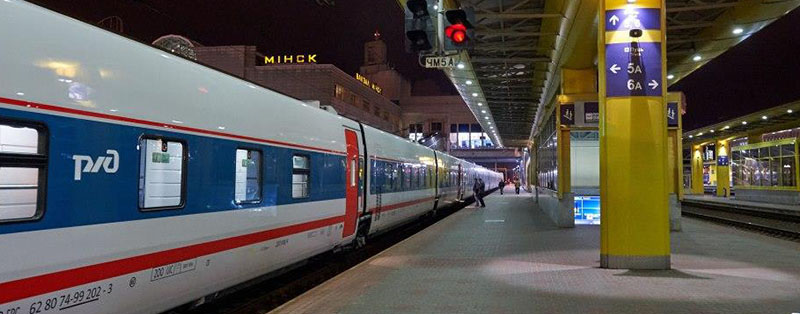Brief description of the Development Strategy until 2030
Strategic goals
The Russian Railways Group’s mission aims to achieve the following strategic goals by 2030:
- To maintain leading positions in freight railway transportation in Europe, enhance the attractiveness of railway transportation for customers and increase freight shipments by 500–800 mln tonnes by 2030;
- To improve the customer satisfaction level by enhancing the quality of services while maintaining competitive transportation costs;
- To become one of the top five companies in Europe in terms of logistics business volume and increase the proportion of transportation and logistics services in the Group’s business portfolio to 25%;
- To provide efficient servicing for the global supply chains of major Russian and international customers and expand the transportation and logistics business on the Eurasian space;
- To maintain the existing proportion of passenger turnover via the Russian transportation system and increase suburban passenger turnover by 1.8–2.2 times and long-haul and interregional turnover by 1.3–1.7 times by 2030;
- To implement projects for the development of rapid-transit and high-speed transportation and ensure transportation at the new speed level makes up 20% of overall passenger turnover by 2030;

- To become a top ten global company in terms of infrastructure construction and ensure the creation of a long-term order portfolio and the highest level of project implementation;
- To retain leading positions throughout the world as regards efficiency, safety and the quality of infrastructure services;
- To ensure the systematic upgrading of assets using innovative technologies and solutions based on the efficient management of the life cycle cost as well as the readiness and reliability of fixed assets;
- To become one of the top five most attractive employers among major Russian companies and recruit the best specialists to work at the Group while guaranteeing a competitive salary, increased productivity, improved labour conditions and a modern social package;
- To prioritise ‘green’ technologies and ensure a 50% reduction in the environmental burden;
- To become one of the top five most attractive employers among major Russian companies and recruit the best specialists to work at the Group while guaranteeing a competitive salary, increased productivity, improved labour conditions and a modern social package.
Key performance indicators
The Russian Railways Board of Directors on 30 June 2014 approved (Minutes No. 15) the Regulation on the Key Performance Indicators of Russian Railways (hereinafter the Regulation on KPI) in accordance with Directive No. 2759p-P13 of the Government of the Russian Federation dated 25 April 2014 and based on the Guidelines for Applying the Key Performance Indicators (approved by Order No. ISh-P13-2043 of the Government of the Russian Federation) dated 27 March 2014).
The Regulation on KPI includes two groups of indicators: financial (amount of dividends, EBITDA, EBITDA margin and revenue (collected)) and industry-related indicators (traffic safety level and work performed). The KPI stipulated in the Regulation serve as the basis for motivating members of the Russian Railways Management Board (approved by the Russian Railways Board of Directors on 30 June 2014).
Russian Railways approved the method for calculating the Russian Railways Group’s return on invested capital (ROIC) for unregulated types of activities, which specifies the procedure for calculating the actual value of this indicator based on the consolidated IFRS financial statement, in accordance with the Guidelines for Applying the Key Performance Indicators (Directive No. 2759p-P13 of the Government of the Russian Federation dated 25 April 2014). Work was performed in 2016 to update the methodology used to calculate this indicator taking into account the decisions of the Russian Railways Board of Directors dated 27 June 2016 (Minutes No. 12) and also taking into consideration that the methodology did not regulate the procedure for calculating the planned ROIC value for the future period.


